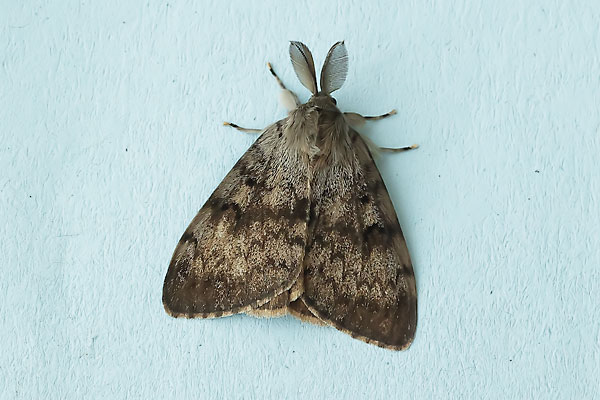Gypsy Moth (Lymantria dispar) | Species | ||||||||||||||||||||||||||||||||
 Male. Taken at Aston, Oxon., on July 22nd 2025. (© David Hastings) (1/250th sec at f/11) DescriptionFamily: Erebidae (ABH : 72.011) Wing span: M 40 - 48mm; F 62 - 70mm The male has a broad, deep brown fore-wing. There are wavy cross-lines, a diffuse dark central band and a roughly V-shaped dark central mark. The female is creamy-white and much larger than the male. The original British sub-species lived in the East Anglian fens, but became extinct in 1907 as these were drained. The European sub-species appears to have colonised sites in southern England. This may have been due to the accidental importation of eggs. The moth can be found in woodland, scrub, plantations, parks and gardens. There is one generation from July to August. The egg is the over-wintering stage. Larvae feed on oaks and other broad-leaved trees. They can be a serious pest, defoliating plantations and ornamental trees. Males come to light, and also fly by day. Earliest UK sighting: 22nd July ; Latest UK sighting: 24th August Sightings
| |||||||||||||||||||||||||||||||||

